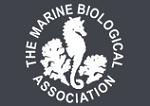APHOTOMARINE
An educational resource dedicated mainly to the photography
and diversity of marine life that can be found in coastal waters
and intertidal areas of Great Britain and Ireland by David Fenwick.

Acasta spongites
- lateral view barnacle 1
Sponge barnacle
Acasta spongites
- perforated basis - ventral 1
Sponge barnacle
Acasta spongites
- perforated basis - dorsal 1
Sponge barnacle
Acasta spongites
- perforated basis - lateral 1
Sponge barnacle
Acasta spongites
- lateral view barnacle 2
Sponge barnacle
Acasta spongites
- exposed barnacles 1
Sponge barnacle
Acasta spongites
- barnacle feeding 1
Sponge barnacle
Acasta spongites
- barnacle feeding 2
Specimens above found growing in the sponge Dysidea fragilis at the foot of a north facing overhang on the lowershore at Gyllyngvase Beach, Falmouth, Cornwall, 17.12.16.
Sponge barnacle
Acasta spongites
- spines viewed from basis 1
Sponge barnacle
Acasta spongites
- spines viewed from basis 2
The specimen above was in a small sample of crevice fauna collected from Hannafore Point, Looe, Cornwall, 04.02.22.
Sponge barnacle
Acasta spongites
- lateral view 1
Sponge barnacle
Acasta spongites
- hooked plates 1
Sponge barnacle
Acasta spongites
- barnacle base 1
Sponge barnacle
Acasta spongites
- within Dysidea fragilis 1
Sponge barnacle
Acasta spongites
- within Dysidea fragilis 2
Sponge barnacle
Acasta spongites
- within Dysidea fragilis 3
Sponge barnacle
Acasta spongites
- the sponge Dysidea fragilis 1
Barnacles typically found under a rock with the sponge Dysidea fragilis. Images taken on the lowershore in front of Albert Pier, Penzance, Cornwall. 10.02.13.
Barnacle plates may have hooks, if not present they may have worn off. The cup-shaped perforated basis (base) is typical for this species. Acasta spongites is probably quite common in Dysidea fragilis around the south-west, but it is greatly under-recorded because it is hardly visible and Dysidea fragilis is usually only found on the lowest tides.
This species is reported as Acasta spongites (Poli, 1795) in the Synopses of the British Fauna (New Series) No.57 Barnacles by A. J. Southward. This is an error, the original description was published in 1791 by Poli J.X. in Testacea utriusque Siciliae eorumque historia et anatome tabulis aeneis illustrata. Ex Regio Typographeio, Parmae. Vol. 1: pp. i-lxxiii, [1-6], i-x, 1-90, 1-50, [1], 1-74, pls 1-18.. Ref: WoRMS.
APHOTOMARINE supports open source data recording and sharing for the benefit of wildlife, recorders, research, science and education. The project recommends the following websites and works with the following bodies and organisations.
The Marine Biological Association or MBA, based in Plymouth, is one of the world’s longest-running societies dedicated to promoting research into our oceans and the life they support. Since 1884 the MBA has been providing a unified, clear, independent voice on behalf of the marine biological community.It has a growing membership in over 40 countries.
The National Biodiversity Network or NBN is a charity that supports open source data sharing and recording supporting conservation, science and education. "Why do recorders need open source?". Simply because it supports the core values of wildlife recording and the free use of records and data over a very wide network that includes partners like the Natural History Museum.
The taxonomy used here is based on that of the following database, which is also used by the MBA, NHM and the NBN.
The World Register of Marine Species or WoRMS.

